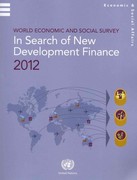Answered step by step
Verified Expert Solution
Question
1 Approved Answer
A profit maximizing movie theater has two types of customers: students and non-students. On any given night, there are 50 potential non-student customers and 10
A profit maximizing movie theater has two types of customers: students and non-students. On any given night, there are 50 potential non-student customers and 10 potential student customers. Each non-student is willing to pay $10 to see a movie and each student is willing to pay $8 to see a movie. On any given night, each will buy at most one ticket. The marginal cost per ticket is $1 and there are no fixed costs.
- Suppose the movie theater decides to charge a single price of $10 per ticket. How many customers will buy a ticket on any given night? How much profit will the movie theater make on a given night? Work must be shown for full credit.
- Suppose the movie theater decides to charge a single price of $8 per ticket. How many customers will buy a ticket on any given night? How much profit will the movie theater make on a given night? Work must be shown for full credit.
- Suppose the movie theater decides to offer a discount to students, what price would it charge students? What price would it charge non-students? How much total profit would the movie theater make? Work must be shown for full credit
- Based on your work in parts (a), (b), and (c), is the movie theater better off when they decide to price discriminate relative to when they do not? If not, why not. If yes, how much better off are they relative to the profit maximizing single-price outcome?
Step by Step Solution
There are 3 Steps involved in it
Step: 1

Get Instant Access to Expert-Tailored Solutions
See step-by-step solutions with expert insights and AI powered tools for academic success
Step: 2

Step: 3

Ace Your Homework with AI
Get the answers you need in no time with our AI-driven, step-by-step assistance
Get Started


